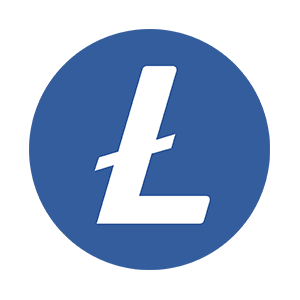- Back to menuNews
- Back to menuPrices
- Back to menuResearch
- Back to menuConsensus
- Back to menuSponsored
- Back to menu
- Back to menu
- Back to menuResearch
- Back to menuWebinars & Events
- Back to menu
About Litecoin
Litecoin (LTC) is a digital currency designed for fast, low-cost payments over the internet. Created by Charlie Lee in 2011 as an alternative to Bitcoin, it offers improved transaction times and a higher maximum supply, using a different algorithm (scrypt) for mining. Litecoin facilitates peer-to-peer transactions without a central authority, making it suitable for a wide range of financial activities, from everyday purchases to trading and investment. Its creation by a former Google engineer aimed to address and improve upon some of Bitcoin's limitations, establishing Litecoin as a practical complement to Bitcoin in the digital currency ecosystem.
Litecoin has a total capped supply of 84 million tokens. The project initially launched with 150 pre-mined tokens (tokens mined by Litecoin developers ahead of the token’s public launch). The project then established a reward of 50 litecoin per block at its inception, with the block reward halving occurring every 840,000 blocks thereafter. The last block is expected to be mined in 2142.
LTC price history includes peaks intersected by long periods of sideways activity. In December 2017 and April/May 2021, Litecoin’s price broke above $250 and reached a peak of about $410 on both occasions before it fell sharply. In May 2021, LTC price recorded its all-time high of $412.96, but it fell by over 50% in the following six months.
Litecoin users send and receive LTC on the blockchain by inputting the public-key information attached to each person’s digital wallet. As noted, Litecoin uses code very similar to Bitcoin’s. But unlike Bitcoin’s proof-of-work consensus – where participants known as “miners” compete against each other using specialised computer equipment to be the first to discover new blocks – LTC incorporates the Scrypt proof-of-work algorithm, which makes it possible to mine the cryptocurrency with consumer-grade hardware.
Another characteristic that makes Litecoin different from Bitcoin is the time it takes to confirm blocks. It takes Bitcoin nine minutes on average to produce a block, while it takes Litecoin two and a half minutes to produce a block on its network. Litecoin essentially serves as a “testnet” for improvements to be implemented on the Bitcoin blockchain. For example, Litecoin integrated the Lightning Network – a second-layer technology for Bitcoin to create micropayment channels for payments – ahead of Bitcoin.
